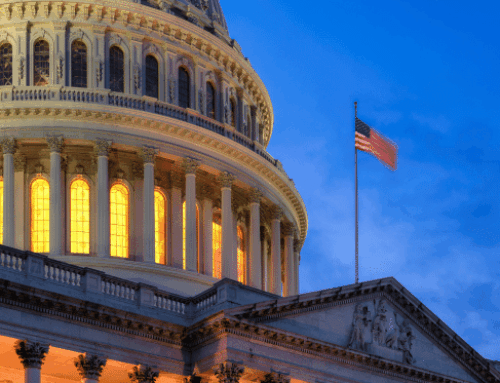All roads this month lead to action on budget reconciliation. On August 11th, when they would normally be back in their home states, the Senate adopted their budget resolution, the first step to passing a massive spending package. The House followed by flying back into town to adopt theirs two weeks later. (It wasn’t quite as smooth as all that, but in the end they got it done). Now committees are starting to put pen to paper. And it’s going to be quite a ride.
The budget resolution included reconciliation instructions to 12 committees in the Senate and 13 in the House. These instructions direct the committees to develop legislation for areas under their jurisdiction that when added together could spend up to a mind-boggling $3.5 trillion.
In anticipation, last week, we released principles all committees to consider while crafting the reconciliation package.
Congress must consider these key principles due to the major threat our nation’s $28 TRILLION debt poses to our current and future needs as a nation.
First and foremost, Congress must ensure that the reconciliation package is fiscally responsible and in pursuit of legitimate public needs. That means the House Agriculture Committee, for example, doesn’t need to spend all $89 billion that the reconciliation instructions call for. If there is a need for increased spending, great. But increased spending for the sake of increased spending is a recipe for disaster.
Second, Congress must not plant fiscally reckless future liabilities. Reconciliation is an opportunity to actually fix past federal policy mistakes. This includes cleaning up the thousands of abandoned oil and gas wells on federal lands while also fixing the system that shifted this financial burden from responsible parties to taxpayers. We must also discontinue wasteful spending on the biomass and biofuels industries that fail to reduce greenhouse gas emissions. The Agriculture Committee reconciliation draft includes a record $960 million for special interest biofuels infrastructure projects, for instance, even though investing more in old school biofuels is a dead end for the climate – and taxpayers.
Third, the reconciliation package must promote resilience instead of dependence on federal spending. This includes removing federal roadblocks to innovation in agriculture, including unnecessary ad-hoc disaster spending as well as reforming farm subsidy programs like crop insurance and shallow loss programs. Even before an additional $9 billion was requested by the White House this week for agriculture disaster aid, government payments to agriculture reached a record $47 billion last year. Subsidies made up nearly 1 out of every 2 dollars of farm income in 2020, the second-highest level on record. As farmers told us at TCS this week in northeast Nebraska, they don’t need any more government support – particularly with higher commodity prices. Instead of increasing the government’s role in agriculture, Congress should prioritize smart investments, including cost-effective conservation practices that encourage innovation, promote resilience to climate risks, and deliver measurable public benefits.
Fourth, Congress must do more than provide dollars, it must also make policy change. This includes investing in real, lasting climate solutions instead of spending additional dollars on existing programs like the Department of Energy’s Loan Guarantee Program – or new similar programs, which disproportionately pass risk onto taxpayers. It is fiscally reckless to direct federal support to projects that carry high costs and liabilities for taxpayers, like nuclear reactors. In addition, simply allocating money to carbon banks or other agriculture conservation programs without reforming underlying programs and prioritizing program dollars toward projects with the best return on investment could result in taxpayer dollars being wasted.
And last but not least, we mustn’t forget how this enormous package will be paid for – or whether the can will be kicked down the road. The $3.5 trillion is the potential gross spending from the package. It doesn’t have to be that big and it doesn’t have to be deficit financed. Therefore, revenue provisions are likely to be a major part of the reconciliation package – ranging from potentially rolling back some of the corporate provisions in the 2017 tax cut to enacting new provisions regarding education, family, or other areas of interest. Congress can also end unnecessary industry giveaways, like below-market royalty, rental and bonding rates for oil and gas, and royalty-free gold, silver and other hardrock minerals. Regardless of the provisions, they need to be enacted fairly, targeted, and not drafted in a way to artificially reduce the price tag. Gimmicks such as creating popular tax provisions for only a portion of the scoring window as was cynically done in the 2017 tax cut are not responsible.
Our principles seem like common sense. But when Congress is involved, the budget process turns into a bonanza. Policymakers are attempting to jam some square policy provisions through a round budget reconciliation hole. And yet other policy changes fall outside the reconciliation rules, whether they are spending- or revenue-related. Therefore, some legislative changes – to both be effective and durable – need to go through regular order.
As we continue to advocate for common sense within budget reconciliation, please follow along here for more info and additional committee recommendations.








